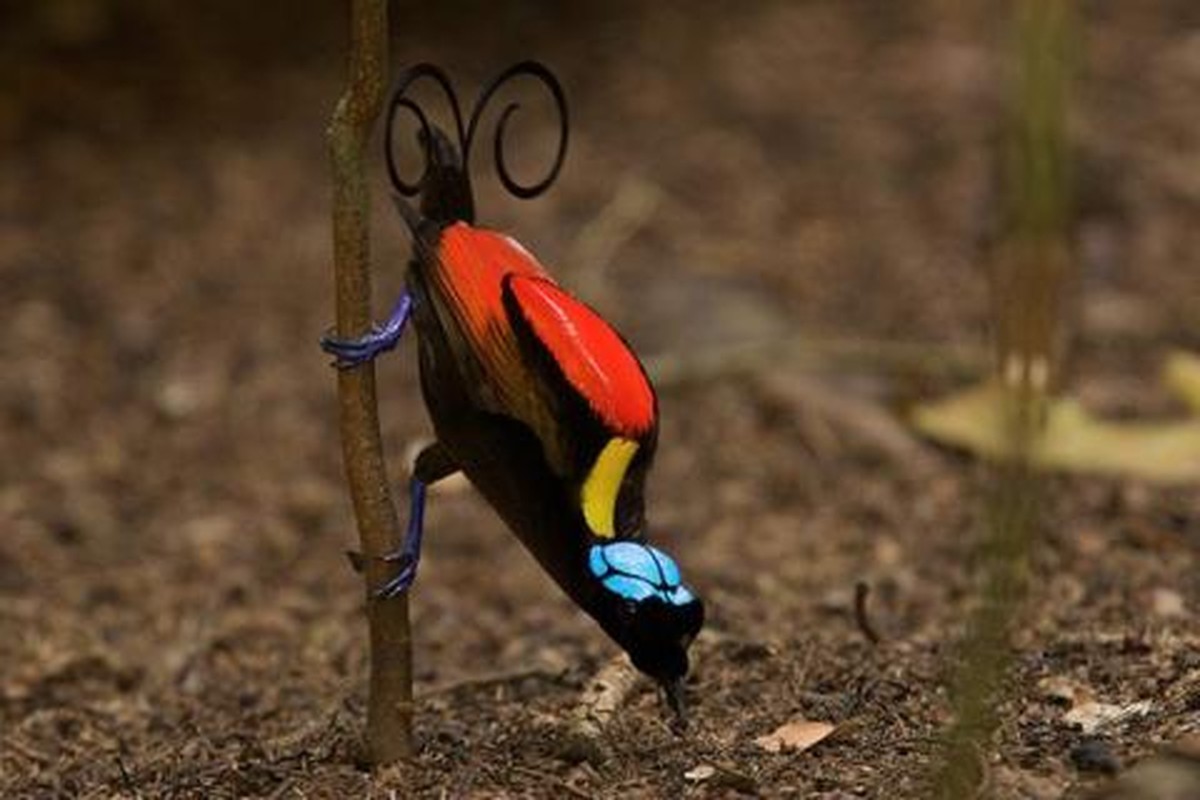Wilson’s bird of paradise (Cicinnurus respublica) belongs to the Paradisaeidae family, living on Waigeo and Batanta islands off the coast of West Papua, Indonesia. This bird has an unmistakable appearance with eye-catching plumage of crimson, yellow, green and blue. In particular, the turquoise head of Wilson’s bird of paradise has no feathers but is a fold of bare skin. Along with two long, curved tail feathers, it plays an important role in helping the male bird of paradise attract a mate. Only the male bird has a brilliant appearance with an impressive curved tail. This is the most beautiful bird in the world. The females have light brown plumage with a dark green crown

. To attract the female’s attention, the male clears away leaves or debris to create a stage on the forest floor. In the middle of the flat ground, it will perform by jumping from branch to branch, bending its body in many positions, spreading its colorful iridescent feathers and singing loudly. Not only does the male shake his head, stretch his neck, and hold his tail upside down, sometimes the male also opens his mouth wide in front of the female to convince his partner. Birds of paradise are among the oldest types of songbirds. Wilson’s bird of paradise was discovered in 1850, but it was nearly 150 years later that its love dance was recorded in the wild by famous naturalist David Attenborough.

Wilson’s bird of paradise (Cicinnurus respublica) belongs to the Paradisaeidae family, living on Waigeo and Batanta islands off the coast of West Papua, Indonesia. This bird has an unmistakable appearance with eye-catching plumage of crimson, yellow, green and blue.





